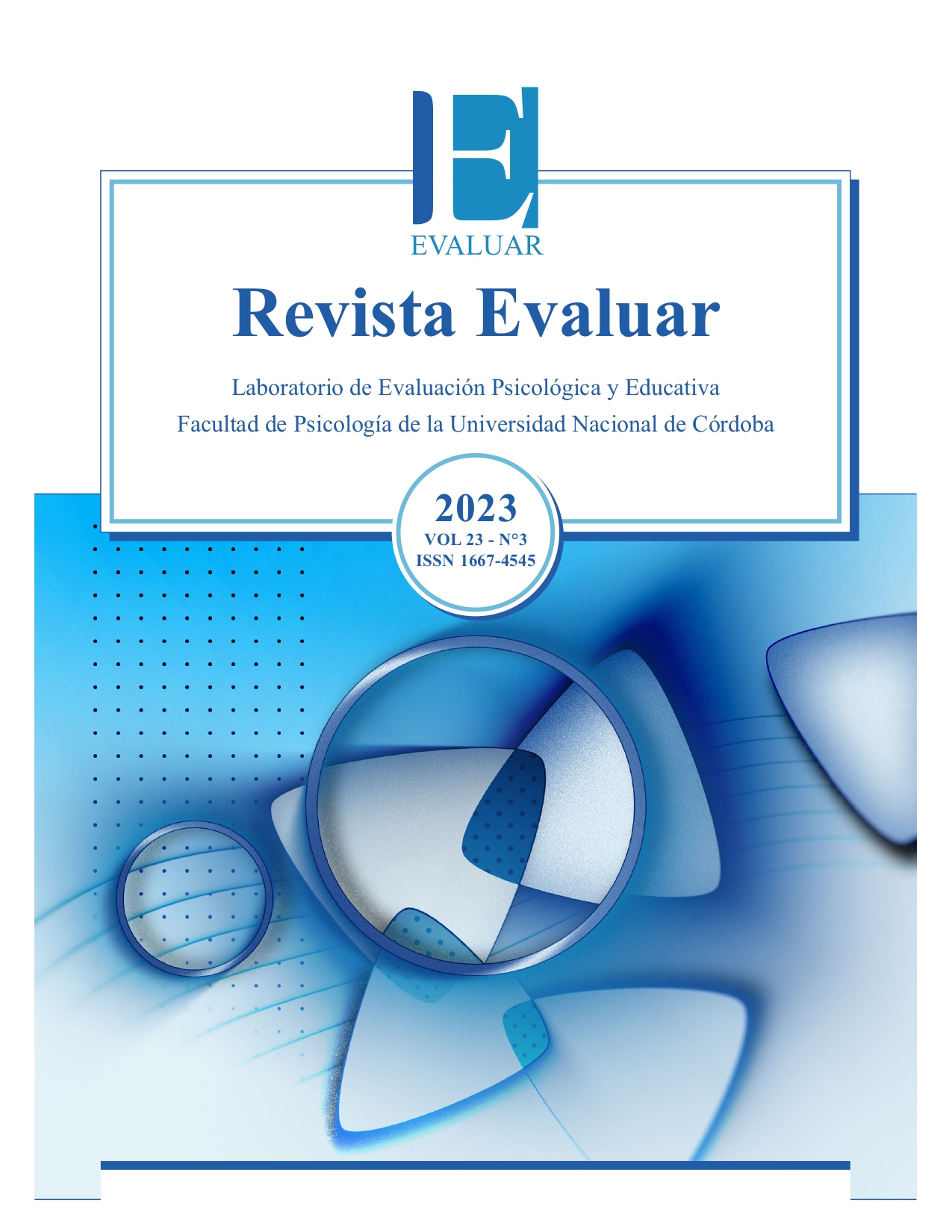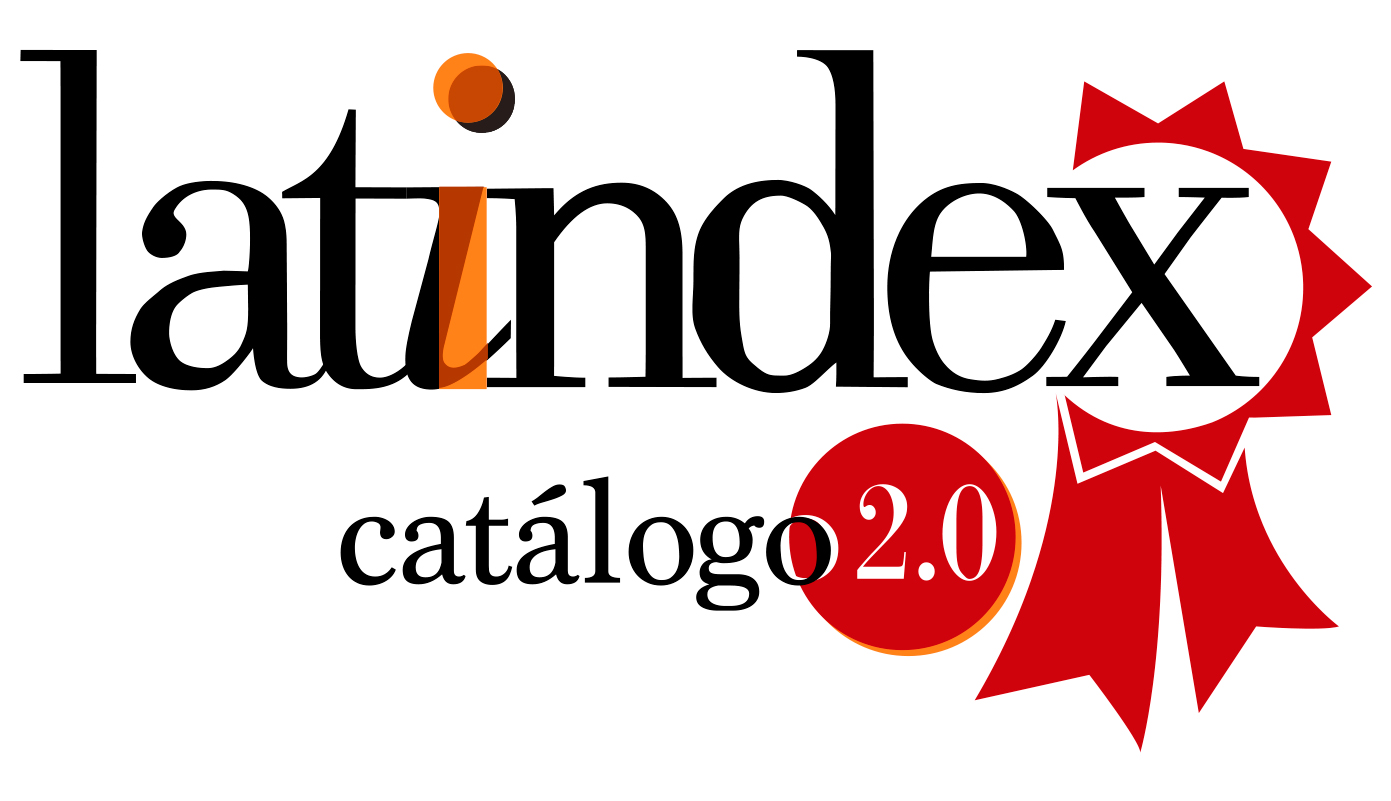Thinking aloud methodological elements to obtain evidence of content validity
DOI:
https://doi.org/10.35670/1667-4545.v23.n3.43899Keywords:
thinking aloud, valid evidence, select sample, expert consistency index, quantitative reasoning skillAbstract
Think-aloud has been implemented in educational research mainly to define the solution strategies of the subjects on different tasks. In particular, it has been used to determine the strategies the subjects implement to find solutions to items in educational tests. However, since the steps of the methodological think-aloud elements followed to obtain valid evidence are not explicit and are important to define, this article aims to provide the methodological steps, from a theoretical perspective so they can be implemented. To develop the steps, a comprehensive literature review was carried out, and the following steps were proposed: 1) define the purpose, 2) elaborate the solution processes of the items from a theoretical perspective, 3) select the thinking-aloud sample, 4) simulation process, 5) data recollection, 6) think-aloud transcript and analysis. These steps can lead to a successful think-aloud process that produces reliable, valid evidence.
Downloads
References
American Educational Research Association, American Psychological Association, & National Council on Measurement in Education. (2014). Standards for Educational and Psychological Testing. American Educational Research Association.
Artavia-Medrano, Á. (2015). Interpretación y análisis de pruebas psicológicas y educativas con el método Rule-Space. Revista Actualidades en Psicología: Medición y Psicometría, 29(119), 63-77. https://doi.org/10.15517/ap.v29i119.18724
Brizuela, A., Jiménez-Alfaro, K., Pérez-Rojas, N., Rojas-Rojas, G. (2016). Autorreportes verbales en voz alta para la identificación de procesos de razonamiento en pruebas estandarizadas. Revista Costarricense de Psicología, 35(1), 17-30. http://dx.doi.org/10.22544/rcps.v35i01.02
Cohen, J. (1960). A coefficient of agreement for nominal scales. Educational and Psychological Measurement, 20(1), 37-46. https://doi.org/10.1177/001316446002000104
Embretson, S. (2017). An Integrative Framework for Construct Validity. En A. A. Rupp & J. P. Leighton (Eds.), The Handbook of Cognition and Assessment: Frameworks, Methodologies and Applications (pp. 102-123). Wiley Blackwell.
Ercikan, K., Arim, R., Law, D., Domene, J., Gagnon, F., & Lacroix, S. (2010). Application of think aloud protocols for examining and confirming source of Differential Item functioning identified by expert reviews. Educational Measurement: Issues and Practice, 29(2), 24-35. https://doi.org/10.1111/j.1745-3992.2010.00173.x
Ericsson, K. A., & Simon, H. A. (1984). Protocol analysis: Verbal reports as data. The MIT Press.
Ericsson, K. A., & Simon, H. A. (1987). Verbal reports on thinking. En C. Faerch & G. Kasper (Eds.), Multilingual matter: Introspection in second language research (pp. 24-53). Multilingual Matters.
Fleiss, J. L. (1971). Measuring Nominal Scale Agreement Among Many Raters. Psychological Bulletin, 76(5), 378-382. https://doi.org/10.1037/h0031619
Fonteyn, M. E, Kuipers, B., & Grobe, S. J. (1993). A Description of Think Aloud Method and Protocol Analysis. Qualitative Health Research, 3(4) 430-441. http://dx.doi.org/10.1177/104973239300300403
Green, A. (1998). Verbal Protocol Analysis in Language Testing Research: A Handbook. Cambridge University Press.
Joseph, G., & Patel, V. (1990). Domain knowledge and hypothesis generation in diagnostic reasoning. Medical Decision Making, 10(1), 31-46. https://doi.org/10.1177/0272989X9001000107
Keehner, M., Gorin, J. S., Feng, G., & Katz, I. R. (2017). Developing and validating cognitive models in assessment. En A. A. Rupp & J. P. Leighton (Eds.). The Handbook of Cognition and Assessment: Frameworks, Methodologies, and Applications. (pp. 75-101). Wiley Blackwell. https://doi/10.1002/9781118956588.ch4
Landis, J. R., & Koch, G. G. (1977). The measurement of observer agreement for categorical data. Biometrics, 33(1), 159-174. https:/doi/10.2307/2529310
Leighton, J. P. (2004). Avoiding misconception, misuse and missed opportunities: The collection of verbal reports in educational achievement testing. Educational Measurement: Issues and Practice, 23(4), 6-15. https://doi.org/10.1111/j.1745-3992.2004.tb00164.x
Leighton, J. P. (2013). Item difficulty and interviewer knowledge effects on the accuracy and consistency of examinee response processes in verbal reports. Applied Measurement in Education, 26(2), 136-157. https://doi.org/10.1080/08957347.2013.765435
Leighton, J. P., Cui, Y., Ken-Cor, M. (2009). Testing expert-based and student-based cognitive models: An application of the attribute Hierarchy method and Hierarchy Consistency Index. Applied Measurement in Education, 22(3), 229-254. https://psycnet.apa.org/doi/10.1080/08957340902984018
Martínez-Arias, M. R., Hernández-Lloreda, M. J., & Hernández-Lloreda, M. V. (2006). Psicometría. Alianza Editorial.
Padilla, J. L, & Leighton, J. P. (2017). Cognitive interviewing and think aloud methods. En B. D. Zumbo, & A. M. Hubley (Eds.), Understanding
and investigating response processes in validation Research (pp. 211-228). Springer. https://doi.org/10.1007/978-3-319-56129-5_12
Padilla, J. L., & Benítez, I. (2014). Validity evidence based on response processes. Psicothema, 26(1), 136-144. https://doi.org/10.7334/psicothema2013.259
Prieto-Adánez, G. (2011). Evaluación de la ejecución mediante el modelo Many-Facet Rasch Measurement. Psicothema, 23(2), 233-238. http://www.psicothema.com/pdf/3876.pdf
Rojas-Torres, L., & Ordóñez-Gutiérrez, G. (2019). Proceso de construcción de pruebas educativas: El caso de la Prueba de Habilidades Cuantitativas. Revista Evaluar, 19(2), 15-29. https://doi.org/10.35670/1667-4545.v19.n2
Rovinelli, R. J., & Hambleton, R. K. (1977). On the use of content specialists in the assessment of criterion-referenced test item validity. Tijdschrift voor Onderwijsresearch, 2(2), 49-60. https://files.eric.ed.gov/fulltext/ED121845.pdf
Ruiz, F.J. & Luciano, C. (2012). Relacionar relaciones como modelo analítico-funcional de la analogía y la metáfora. Revista Latina de Análisis de Comportamiento, 20. https://www.redalyc.org/articulo.oa?id=274525194014
Russo, J. E., Johnson, E. J. and Stephens, D. L. (1989). The validity of verbal protocols. Memory & Cognition, 17, 759–769. https://link.springer.com/article/10.3758/BF03202637#Bib1
Sapsirin, S. (2016). The application of verbal protocol analysis in second/foreign language testing research. Revista de revisión del idioma - Universidad de Chulalongkorn, 31. https://www.culi.chula.ac.th/en/pasaa-paritat/view/9
Stelzer, F., Vernucci, S., Aydmune, Y. S., del Valle, M. V., & Andrés, M. L. (2020). Diseño y validación de una escala de actitudes hacia las matemáticas. Revista Evaluar, 20(2), 51-68. https://doi.org/10.35670/1667-4545.v20.n2.30109
Van Den-Haak, M., De Jong, M., & Jan-Schellens, P. (2003). Retrospective vs. Concurrent think-aloud protocols: Testing the usability of an online library catalogue. Behaviour & Information Technology, 22(5), 339-351. http://dx.doi.org/10.1080/0044929031000
Virzi, R. A. (1992). Refining the Test Phase of Usability Evaluation: How Many Subjects Is Enough? Human Factors, 34(4), 457-468. https://doi.org/10.1177/001872089203400407
Downloads
Published
How to Cite
Issue
Section
License

This work is licensed under a Creative Commons Attribution 4.0 International License.
Revista Evaluar aplica la Licencia Internacional de Atribuciones Comunes Creativas (Creative Commons Attribution License, CCAL). Bajo esta licencia, los autores retienen la propiedad de copyright de los artículos pero permiten que, sin que medie permiso de autor o editor, cualquier persona descargue y distribuya los artículos publicados en Evaluar. La única condición es que siempre y en todos los casos se cite a los autores y a la fuente original de publicación (i.e. Evaluar). El envío de artículos a Evaluar y la lectura de los mismos es totalmente gratuito.




_(3).jpg)



.jpg)



